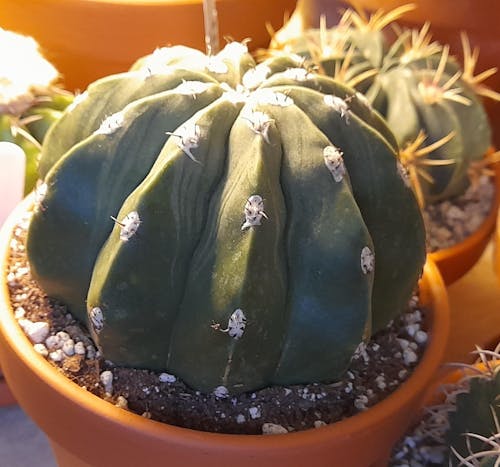Stunning, brightly-coloured flowers with the characteristic double petals, above lush green foliage. Half-hardy in the UK, down to -5°C.
These gorgeous blooms make an explosion of colour in the garden, blooming with a crowd of petals around the centre. These 'double' blooms have been bred to be consistently productive with petals, and encapsulate the beauty expected from a Dahlia. Coming in a variety of colours, these plants will thrive in a sunny spot in a sheltered garden, and will bring you colour and vibrancy throughout sunmmer; deadheading encourages the plant to keep producing new flowers too!
Tender Perennial
|
Flower: Clump forming
|
Foliage from spring to autumn, flowers summer and autumn.
|
Scientific Name
Dahlia (Dahl's plant)
Common Name
Dahlia
Origin
Dahlias originate in Central America, mainly Mexico, but this series has been hybridised elsewhere, bred for growing in gardens.
Pruning Tips
Deadhead flowers to encourage more to bloom. Pinch back the tips to keep the plant bushy and compact.
Wildlife Value
Where the centre is accessible to pollinators, Dahlias provide forage for a range of insects, including nectar for butterflies. The large number of petals on this Dahlia can make this access difficult, so if you want to encourage insects in, look out for flowers where you can see the pollen-rich centre!
Positioning
Place in full sun, with shelter from the wind.
Water
Water freely when the weather is dry.
Soil
Needs fertile, well-draining soil; flexible on soil type as long as it drains well and has plenty of nutrients! Will love the addition of organic matter and compost.
Food
Make sure to provide fertile soil for this hungry plant. Feed regularly throughout summer; a fertiliser high in potassium will help promote flower growth.
Pet-safe
No, this plant contains toxic compounds and can cause stomach pains, vomiting and dermatitis when nibbled or when contact with the sap is made.
Sprouts Top Tips
To bring your Dahlias back year on year, they will most likely need protection over winter. In warmer or coastal areas, this may mean just covering them over; if you get very cold, wet winters, though, you'll need to bring them indoors or shelter them somewhere they are less likely to freeze or rot, such as a shed or greenhouse. If you are going to do this, take note of where they are when they're flowering and visible; the foliage will die back in late autumn, and the tubers can be difficult to find otherwise!














![The 'Mulled Wine' Fresh Foliage Christmas Wreath [Made to Order]](https://judgeme.imgix.net/sprouts-of-bristol/1764939241__img_20251128_124445__original.jpg?auto=format&w=500)










